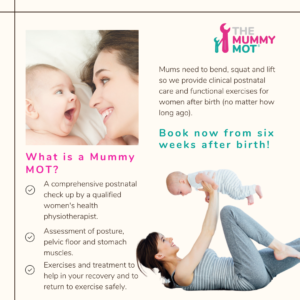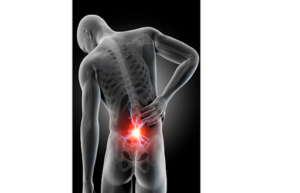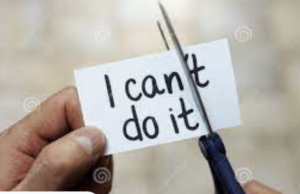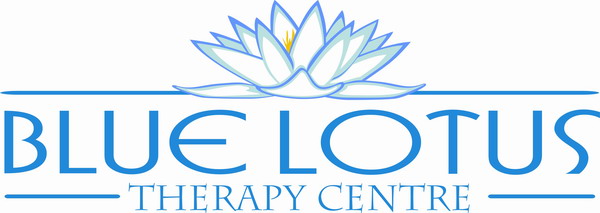
I thought I would share this lovely autumnal poem
To Autumn
John Keats – 1795-1821
Season of mists and mellow fruitfulness,
Close bosom-friend of the maturing sun;
Conspiring with him how to load and bless
With fruit the vines that round the thatch-eves run;
To bend with apples the moss’d cottage-trees,
And fill all fruit with ripeness to the core;
To swell the gourd, and plump the hazel shells
With a sweet kernel; to set budding more,
And still more, later flowers for the bees,
Until they think warm days will never cease,
For summer has o’er-brimm’d their clammy cells.
Who hath not seen thee oft amid thy store?
Sometimes whoever seeks abroad may find
Thee sitting careless on a granary floor,
Thy hair soft-lifted by the winnowing wind;
Or on a half-reap’d furrow sound asleep,
Drowsed with the fume of poppies, while thy hook
Spares the next swath and all its twined flowers:
And sometimes like a gleaner thou dost keep
Steady thy laden head across a brook;
Or by a cider-press, with patient look,
Thou watchest the last oozings, hours by hours.
Where are the songs of Spring? Ay, where are they?
Think not of them, thou hast thy music too,–
While barred clouds bloom the soft-dying day,
And touch the stubble-plains with rosy hue;
Then in a wailful choir the small gnats mourn
Among the river sallows, borne aloft
Or sinking as the light wind lives or dies;
And full-grown lambs loud bleat from hilly bourn;
Hedge-crickets sing; and now with treble soft
The redbreast whistles from a garden-croft,
And gathering swallows twitter in the skies.
The Spell of Time Thieves

credit Luci Downes for artwork
The Spell of Time Thieves …
…. things we can do to reclaim our time & stress less
Recently, I’ve been thinking more about time and the pressure we are under to fit everything in, particularly now the “business as usual” incantation seems to be bewitching us and the strain starts to take its toll again.
I’ve been having conversations with people, some of whom have slipped back all too easily into all the commitments which were stressing them out or making them ill prior to the pandemic. Others have made radical changes to their lives, changing jobs or working fewer hours.
We can’t get time back, but we can counter that which steals our time and energy.
Reduce consumption
Up until the end of the 3rd lockdown, many people kept their costs down as they realise that consumption was really a short-lived antidote to feeling overworked or stressed. Often, we justify shopping with reasons such as “I’m going shopping to cheer myself up”, “because I deserve it”, “it was in the sale”, or “it fits so well” so we buy it because it looks great even though we don’t need more than the 20 jackets crammed into our wardrobe. The glamour never lasts.
Personally, I’ve been re-evaluating what I spend “life tokens” (a me-ism for money) on. I have reduced my freelance work hours and do more of the things which nurture me, like reading, gardening and spending time in nature. I find I don’t need to buy that coffee and cake so much if I am contentedly taking a walk or pottering up our land with a cup of meadowcine watching nature sneak back in. Which leads me onto the next point …..
Cast out TV & hug a tree
I am guilty of watching TV as much as the next person. It’s so easy to flump down on the sofa and be entranced by a film or performance. However, sometimes I opt for something different where the magic is more tangible.
To break the spell simply stop, then breathe. Now do this outside. Go to the park, the woods, the forest. Spending time in the company of trees which release phytoncides is even better for us. Phytoncides are chemicals which are found in the essential oils within trees and improve our wellbeing. Essential oils are the parts of a plant which help retain its health, fighting disease and parasites. As the volatile phytoncides are released into the air we inhale them, boost our immunity, reduce stress, lower blood pressure and our pulse rate. A growing body of research (1) (2) is showing that tree huggers were right all along.
Accept you can’t do it all & negotiate!
Some of my NHS colleagues are really feeling the pressure of time at the moment as we struggle to get round to seeing patients and reduce waiting lists. I noticed that some of my team who were making positive changes to enhance wellbeing, like taking breaks and leaving on time, have started slipping back towards old culturally toxic habits. Hell, hands up, so have I!
As the waiting lists never disappear (and let’s face we’d be out of a job if they did), this approach is unsustainable. It also disguises the fact that many departments are understaffed. By working extra hours for free, true staffing needs are unable to be measured, nothing changes and the pressure remains. I have started saying “no”. I accept that waiting lists are in the main, indicative of staff shortages and not my personal burden to carry.
If someone asks something of you and it is adding to an already hefty workload, explain you would love to help, but something has to give. Show them your options and agree what needs your focus and what needs to give. This is a great skill to use in your personal life too.
Invest time in yourself
I recently recalled a social movement that was promoted 2 or 3 years ago within our local NHS trust called “15 seconds, 30 minutes”. Its aim was to “encourage staff to identify small tasks they can do now, which will save someone else 30 minutes to reduce frustration and increase joy in work”. Well, at least reduce the curses anyway.
It made me think how we could apply this to our health; invest a little time now on ourselves to save time in the longer run. If we break from our work, our stressors, our screens for just a few minutes it can save us getting stressed, then ill & therefore taking more time off sick in the longer term. Economically it saves money too. A healthy workforce is happier more efficient workforce that is less likely to burn out. It is a great way to model healthy boundaries to colleagues and our children – after all we really don’t want to raise a generation of blighted by the scourge of “burn-out”.
Limit Social Media – the biggest time thief of them all!
I have been thinking about coming off facebook for years. I reinforced the enchantment by saying I needed it for work. However, I took time to look beyond the mirror, on whether I needed social media to sustain my work. At present, I am as busy as I want to be and felt that Facebook was a sinkhole for my energy, time, health and me-ness.
I felt connections were only comment deep. My identity is not a fixed avatar. I am so much more than my posts. Alice would understand.
Breaking away from the looking glass that is my screen was hard at first. I had to adjust to not thinking in terms of “what to post on facebook” next, and weaning myself off the dopamine charm of validation. It only took a few days though.
Free of the sorcery of facebook (which is only there to harvest your info, make you feel inferior, and so sell you more crap you don’t need. – see Point 1.), my mornings, are more relaxed and I am less distracted by all the “stuff”, adverts and information that social media bombards us with constantly. Billy Bragg’s recent song, “Ten Mysterious Photos that can’t be Explained” wisely cites, “you know that you can overdose on information.” It’s true. My mind feels less cluttered, I have more space to think and am enjoying reading books more.
I still Twit & Instagram a bit, taking regular breaks from all tech, but feel that I may well come off those too in future as I indulge more time with myself, family, newts, lizards, finches and the wonder of watching nature and biodiversity sneak back into our field. By the way, I found out that the collective noun for finches is a “charm” of finches. I’ve been watching them weave around the trees we have been planting over the past 4 and a half years and it’s better than anything I may have missed on social media or the tellybox.
So let’s do it! Let’s break the spells of the time thieves and spend our time and energy wanting less and appreciating more of the vital magic in our lives.
Li Q, Kobayashi M, Wakayama Y, Inagaki H, Katsumata M, Hirata Y, Hirata K, Shimizu T, Kawada T, Park BJ, Ohira T, Kagawa T, Miyazaki Y. Effect of phytoncide from trees on human natural killer cell function. Int J Immunopathol Pharmacol. 2009 Oct-Dec;22(4):951-9. doi: 10.1177/039463200902200410. PMID: 20074458.
Chae Y, Lee S, Jo Y, Kang S, Park S, Kang H. The Effects of Forest Therapy on Immune Function. Int J Environ Res Public Health. 2021 Aug 10;18(16):8440. doi: 10.3390/ijerph18168440. PMID: 34444188; PMCID: PMC8394293.


The Mummy MOT® is a specialist postnatal examination for women following either vaginal or C-section deliveries. It helps to assess how your pelvic floor muscles, posture and stomach muscles are recovering following childbirth.
Our Mummy MOT Physiotherapist, Ruth Bennett, is here to help and will provide you with gentle exercises and treatment to aid your recovery and get you back on track with your fitness and exercise goals. Your initial consultation will include a full postural & functional assessment, pelvic floor assessment. abdominal muscle examination to screen for any separation and an assessment of your C section scar tissue if required.
An initial consultation/assessment lasts up to 75 minutes and costs £70.
Ruth is available on Mondays and Thursdays at The Blue Lotus Therapy Centre.
You can find out more about Ruth and her services at www.ruthbennettphysio.com.

Dare to Blossom online workshops
Hello everyone,
Some of you may remember my regular workshops at the Blue Lotus. Since last year I have switched these to Zoom and they have proved to be popular, with people attending from around the world. You are invited to come along to experience a Magic Carpet Ride guided visualisation, some Dare to Blossom Rediscovery Cards drawn for you, and share an hour in a supportive group of like-minded people.
There are two opportunities each month, payment is by donation depending on your circumstances. The dates for November and December 2021 are:
Thursday 4th November at 9.00 am
Saturday 6th November at 11.00 am
Thursday 2nd December at 9.00 am
Saturday 4th December at 11.00 am
Find out more on https://daretoblossom.co.uk/workshops-and-events where you will also see details of the next six week ‘deep-dive’ programme “Welcome In Change – Creating the New”, which begins on 1st November.
Contact me to book on the monthly workshops or the longer programme, there will be a further series of those during 2022. mary@daretoblossom.co.uk
Here is a comment from someone who has attended: “Mary’s work helps to weave deep connections – with ourselves, with others, and with the beauty that surrounds us. It has a subtle yet strong power.”

CHRONIC PAIN MANAGEMENT
Chronic pain can have a long-term detrimental effect on your well-being and general health. Because it has been part of your daily struggle for so long, that pain becomes very multi-dimensional, bleeding into your thinking, your emotional state and your behaviours.
Hypnotherapy is a wonderful, drug-free, way of reducing chronic pain and changing the way that pain interferes with your life.

Tried and tested and supported by evidence, hypnosis is a valued extra tool in providing pain relief. There are no side effects, other than a bigger smile.
Many people who suffer in silence have no idea what a difference hypnosis could make. Often a client may have forgotten what it was even like to be able to function better and without pain being the main focus of the day. When the doctors have said there’s nothing more that can be done and the future is one of pain-killing drugs and tolerance, I invite you to open your mind and explore the possibilities of the strength of that mind over that body.
Hypnosis is not just the world of Paul McKenna and his stage shows. Its therapeutic worth is recognised worldwide and it is enabling many people to live in greater comfort than they might have believed was ever possible.
Of course, pain is not the only area of your life where hypnotherapy can make a difference. Please feel free to explore my website: www.im-hypnotherapy.online, or telephone me with any questions on 07782 968619.
For any bookings as a result of this newsletter, please quote HYPNO10% for a 10% discount on your first 3 sessions.
I look forward to being able to brighten up your world.
Isi
x
‘Make it Happen’
Brian Tregunna provides a revealing insight into motivation
and how to create the changes we want in our lives.
We can all struggle for motivation at times. We know that we are not happy with our current circumstances but either don’t know what to do, how to do it or how to get started.
Are you the sort of person who says things like?
‘I know what I need to do but I just can’t get going.’
‘I often start doing something but then lose focus and concentration.’
‘I just can’t be bothered.’
Then continue reading this article to learn about motivation and how to ‘make it happen.’
Motivation is usually a combination of:
1) Creating a compelling vision that draws us forward.
2) Letting-go of negative influences that hold us back.
Motivation is not one size fits all: what motivates your partner or best friend is NOT necessarily going to motivate you. You need to be self-aware, understand what works for you and then put it into practice. Creating self-motivation is about lighting-up our imagination through our 5 main senses (see, hear, feel, taste, smell) so that we can imagine something positive that we want to have in our lives, such as looking better or feeling fitter.
There are 6 main types of motivation:
1. Rewards / Incentives: ‘I want to get (a specific reward), so I’m going to …’
2. Fear of Consequences: ‘I want to avoid (a bad thing), so I’m going to …’
3. Achievement: ‘I want to achieve (milestone, award, recognition), so I’m going to …’
4. Growth: ‘I want to continually improve, progress, grow, so I’m going to …’
5. Power: ‘I want to feel strong, powerful and influential, so I’m going to …’
6. Social Factors: ‘I want to feel a sense of belonging, like I am part of a group, a team or community, so I’m going to …’
Identify which of the above motivators apply to you, then use that self-awareness to focus your energy, actions and behaviours. Commit to a goal that fits your preferred motivation type, otherwise it will feel very difficult to make it happen. You will be trying to ‘make’ yourself feel motivated and will therefore probably quit or fail to even begin.
Take Responsibility
If something is having a negative influence on your life, then it is YOUR problem,
regardless of whoever or whatever is causing it.

This is often easier said than done, but when you can learn to ‘take responsibility’ and accept that the onus is on you, then you can improve your situation, and often solve problems completely.
We can be an expert in our problems, which seldom helps, or an expert in the solution, which is much more positive. The quicker you can ‘take responsibility’, the quicker you move forward. There is always something that can be done, even though it may be difficult and challenging to do so.
Take action. Move forward one step at a time. A series of steps becomes a journey, which will eventually lead to a destination.
Inspiration
Inspiration leads people to take action.
Motivation comes from within, but it is often inspired by an external source. That inspiration may come from a range of activities, such as music, art or dance. It may also come from someone else’s story, an inspirational quote or visiting a particularly uplifting location.
Most of us seek inspiration at various times and we know what it feels like when we find it. However, sometimes we can also struggle to find or maintain inspiration. It is important to identify what works for you and to then make sure you keep it in your life. Strengthen your self-awareness by asking yourself what, where, when or who inspires you?
We can also inspire ourselves if we stop and think about what motivates and enthuses us; be that family, friends, self-fulfilment, or the acquisition of material possessions. Once we make progress and experience the benefit of the changes, that also becomes inspiring and motivating. We see, hear and feel the difference. Then we want more of it, as success breeds success and we go from strength to strength.
What gives you the energy to get moving and make things happen?
What leads you to take action?
Hold on to that thought so that, whenever you need inspiration, you know where to find it.
Goals
‘People with Goals succeed because they know where they are going.’ (Sir Edmund Hillary)

Make your Goals positive rather than negative, eg ‘I will wear smaller-sized clothes and be able to enjoy a good walk,’ is more positive than saying ‘I want to lose weight’ or ‘I will stop smoking’.
The more focused and specific you are with your Goals the better, for example, saying, ‘I will do a brisk 30 minute walk every day, regardless of the weather’ is stronger than saying ‘I will try to go for a walk more often.’
Tap into your feelings and emotions so that you can really identify with the benefits; for example, knowing that improving your physical health and fitness will also improve your mental wellbeing, lift your self-esteem and help to improve personal relationships. It will also help you to feel proud, happy, calm and relaxed.
A lot of this is connected with your unconscious mind. If, for instance, you’ve not been doing much exercise and suddenly want to do a lot more, the unconscious mind will see that as a perceived ‘threat’ and may try to stop you. You therefore need to train the unconscious mind to recognise that the changes are not a threat but something you really need and want to do.
Top Tips
Be self-aware and take responsibility for your own motivation. We are all individuals and are motivated by different factors, such as achievement, growth and reward. Find out what works for you and use that to create motivation.
Take control of your thinking, refuse to be a victim. Recognise and understand what is happening, then take action.
Be careful what you say because you are the one who is always listening. Keep talking positively to yourself and others. You are training your unconscious mind.
Make your Goals positive. Move towards something you want rather than away from something you don’t want.
Light-up your imagination. Use all your senses to create a compelling vision of what you are moving towards.
Connect with your emotions and feelings. Identify with the benefits for yourself and others.
Keep going until you build new habits. Your body will release chemicals that will improve your wellbeing, eg Serotonin, Dopamine and Endorphins. In time, your mind and body will look for those rewards and encourage you to act. It will become a natural part of you.
Brian Tregunna is a highly-acclaimed Life Coach, therapist, trainer, mentor and facilitator. He works with individuals, groups and organisations to help people achieve their full potential.
He regularly helps people to address a wide range of challenges, including: mental wellbeing, motivation, workplace performance, business development, career progression, gaining employment, health & fitness, personal relationships, public speaking, time management and much more.
Brian Tregunna 07856571163
tregunnalifecoaching@gmail.com
www.tregunnalifecoaching.com


